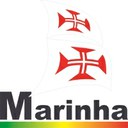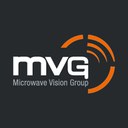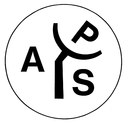Near Field Engineering: Theory, Methods, and Applications (cancelled)
S. M. Mikki and Y. M. M. Antar
Royal Military College of Canada, Canada
 Said Mikki graduated from University of Mississippi in 2008 with a Ph.D degree in Electrical Engineering. Since 2009, he has been working with the Electrical and Computer Engineering Department, Royal Military College of Canada, Canada, as a Research Fellow. He published in the areas of computational methods, optimization techniques in electromagnetics, non-electrodynamics, and metamaterials, antenna near fields and novel methods for characterizing antenna systems. During the last five years, he started at Royal Military College of Canada a general research program in fundamental applied electromagnetic theory, where he managed to develop new foundations for the near field structure. He also developed recently the antenna current Green’s formalism and is currently pursuing its applications to MIMO and near-field systems, and mutual coupling compensation techniques. He is currently working on a book on this new development electromagnetic theory to be published by Artech House next year.
Said Mikki graduated from University of Mississippi in 2008 with a Ph.D degree in Electrical Engineering. Since 2009, he has been working with the Electrical and Computer Engineering Department, Royal Military College of Canada, Canada, as a Research Fellow. He published in the areas of computational methods, optimization techniques in electromagnetics, non-electrodynamics, and metamaterials, antenna near fields and novel methods for characterizing antenna systems. During the last five years, he started at Royal Military College of Canada a general research program in fundamental applied electromagnetic theory, where he managed to develop new foundations for the near field structure. He also developed recently the antenna current Green’s formalism and is currently pursuing its applications to MIMO and near-field systems, and mutual coupling compensation techniques. He is currently working on a book on this new development electromagnetic theory to be published by Artech House next year.
 Yahia M. M. Antar received the B.Sc. (Hons.) degree from Alexandria University, Alexandria, Egypt, in 1966, and the M.Sc. and Ph.D. degrees from the University of Manitoba, Winnipeg, MB, Canada, in 1971 and 1975, respectively, all in electrical engineering. In May 1979, he joined the Division of Electrical Engineering, National Research Council of Canada, Ottawa, ON, Canada, where he worked on polarization radar applications in remote sensing of precipitation, radio wave propagation, electromagnetic scattering, and radar cross section investigations. In November 1987, he joined the staff of the Department of Electrical and Computer Engineering, Royal Military College of Canada, Kingston, ON, Canada, where he has held the position of Professor since 1990. He has authored or coauthored over 170 journal papers and 300 refereed conference papers, holds several patents, chaired several national and international conferences, and given plenary talks at conferences in many countries.. He also serves,since November 2008, as Associate Director of the Defence and Security Research Institute (DSRI). Dr. Antar is a Fellow of the Engineering Institute of Canada (FEIC) and the Electromagnetic Academy. He was elected by the Council of the International Union of Radio Science (URSI) to the Board as Vice President in August 2008, and to the IEEE Antennas and Propagation Society Administration Committee in December 2009. On January 31 2011, he was appointed Member of the Defence Science Advisory Board Coordinating Committee (DSAB). He is an Associate Editor (Features) of the IEEE Antennas and Propagation Magazine and has served as an Associate Editor of the IEEE TRANSACTIONS ON ANTENNAS AND PROPAGATION and IEEE ANTENNAS AND WIRELESS PROPAGATION LETTERS. He is a member of the Editorial Board of the International Journal of RF and Microwave Computer-Aided Engineering. In May 2002, he was awarded a Tier 1 Canada Research Chair in Electromagnetic Engineering, which was renewed in 2009.
Yahia M. M. Antar received the B.Sc. (Hons.) degree from Alexandria University, Alexandria, Egypt, in 1966, and the M.Sc. and Ph.D. degrees from the University of Manitoba, Winnipeg, MB, Canada, in 1971 and 1975, respectively, all in electrical engineering. In May 1979, he joined the Division of Electrical Engineering, National Research Council of Canada, Ottawa, ON, Canada, where he worked on polarization radar applications in remote sensing of precipitation, radio wave propagation, electromagnetic scattering, and radar cross section investigations. In November 1987, he joined the staff of the Department of Electrical and Computer Engineering, Royal Military College of Canada, Kingston, ON, Canada, where he has held the position of Professor since 1990. He has authored or coauthored over 170 journal papers and 300 refereed conference papers, holds several patents, chaired several national and international conferences, and given plenary talks at conferences in many countries.. He also serves,since November 2008, as Associate Director of the Defence and Security Research Institute (DSRI). Dr. Antar is a Fellow of the Engineering Institute of Canada (FEIC) and the Electromagnetic Academy. He was elected by the Council of the International Union of Radio Science (URSI) to the Board as Vice President in August 2008, and to the IEEE Antennas and Propagation Society Administration Committee in December 2009. On January 31 2011, he was appointed Member of the Defence Science Advisory Board Coordinating Committee (DSAB). He is an Associate Editor (Features) of the IEEE Antennas and Propagation Magazine and has served as an Associate Editor of the IEEE TRANSACTIONS ON ANTENNAS AND PROPAGATION and IEEE ANTENNAS AND WIRELESS PROPAGATION LETTERS. He is a member of the Editorial Board of the International Journal of RF and Microwave Computer-Aided Engineering. In May 2002, he was awarded a Tier 1 Canada Research Chair in Electromagnetic Engineering, which was renewed in 2009.
Abstract
The basic motivation for providing this course is the gradual realization in recent times that some of the most promising key breakthroughs latent in the near and far future of applied electromagnetic theory lie in the utilization of the hitherto relatively unexplored rich spatial structures of electromagnetic phenomena. Indeed, the temporal aspects of communication and processing of signals has dominated the field in the last seven decades. However, recently the purely spatial dimensions of radiation, propagation, and signal processing, began to attract wide attention in many research directions. For example, spatial diversity systems like MIMO and the enormous potentials of processing fields in the near zone are now currently pursued in multiple forms, e.g., subwavelength imaging and antenna-antenna interactions in miniaturized systems.
The present short course provides an introduction to this emerging research paradigm of "applied spatial electromagnetics" by building on recent progress in fundamental applied electromagnetic theory, where new foundations for studying, analyzing, and designing electromagnetic systems from the spatial viewpoint have been successfully developed. In particular, the course will review the state of art in near field theory and the antenna current Green's function method in a pedagogically illuminating fashion designed especially with an eye on applications. Many of these applications will be discussed in the short course, while the foundational materials presented here will provide sufficient background for the attendees to probe other applications falling into thier own interest. Examples will be given in applications such as mutual coupling and near field focusing in order to demonstrate how the new foundations can provide useful information for analysis and design. Applications such as NF communications, NF MIMO, short-range radar and detection, propagation in dense electromagnetic environments, wireless energy transfer, energy harvesting, new generations of NF metamaterials, will be discussed in this course.
The short course will provide a brief survey of the progress made in theory in each of these topics, which includes comparison with previous knowledge and the essential advances made in this area in the last few years. It will be indicated how the development can be put in use to introduce new measures for numerical modelling, for example how to compute energy localization and how to synthesize a given near field, how to attack the problem of NF matching, how to filter and shape radiation in the NF zone. Suggestions for new measurement techniques based on the recent development will be addressed in the short course.
Basic Structure of the Short Course
Part I: Introduction and General Background
1. Review of the history of Applied Electromagentics.
2. The symbiotic relation between Fundamental Theory and Engineering Applications
3. The new spatial aspects of Applied Electromagnetic Theory
4. The new horizon of Near Field Engineering: Communications in short range and electromagnetism of dense-and-complex devices and environments.
5. Outline of Near Field Theory and the relation to the foundations of Applied Electromagnetics.
Part II: Fundamentals of Near Field Theory
1. Comparison with the classic dipole near fields.
2. The spatial approach to the near field.
3. Reactive energy: A new and comprehensive approach.
4. Reactive energy and fundamental operational limitations on the performance of generic antennas: A new generalized approach.
5. The spectral approach to the near field.
6. New approach to localized energy: Definitions and Examples.
Part III: The Antenna Current Green's Function (ACGF) Method
1. History and motivations.
2. Why is the ACGF method essential for near field engineering?
3. Comparison with classic methods in applied electromagnetics.
4. A brief outline of the basic definitions and characteristics.
5. Examples of applications of the ACGF.
- Electromagnetic Mutual Coupling
- Analysis of received antenna arrays.
- Analysis of MIMO systems.
- Design of spatial-diversity antenna systems: Synthesis procedure.
Part IV: Near Field Devices
1. What is a near field device?
2. Motivations for near field device engineering.
3. Near field focusing.
4. Near field matching.
5. Examples and some general considerations for present and future applications including new views on topics like
- Near-field MIMO.
- Near-field radars.
- Near-field communications.
- Near-field processing and manipulations.
- Wireless energy transfer.


































